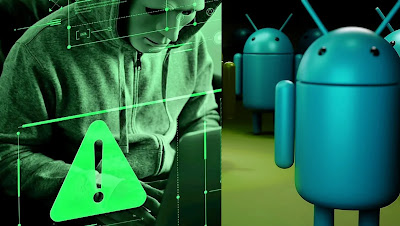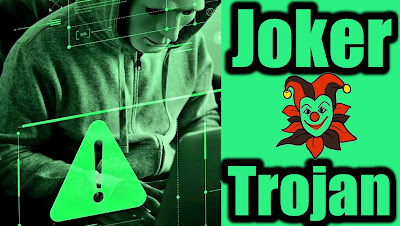The Joker Trojan is far more harmful than expected because it automatically forces affected Android users to pay for services in premium or more expensive versions without their consent. Infected users may not notice it until they see the fees on their monthly bills, underscoring the smooth functioning of the virus. Apps infected with Joker and similar malware are among the most sophisticated in the family of malware, whose purpose is to hack mobile phone bills, authorize operations without individual consent, conduct SMS fraud, and draw attention to online payments.
These two techniques require verification by the device, not by the user, and they can manage automated payments without requiring user interaction. In order to gain unauthorized access to the invoice, the Joker Trojan allows certain operations to obtain the consent of the user.
The Joker virus, which attacks Android devices by hiding in various applications in the Google Play Store, became known in 2017 for infecting and robbering its victims by hiding in various applications. The virus is able to log in users to payment services without users being authorized and empty the user's bank account without the user noticing. It is even more dangerous because the Joker Trojan allows users to subscribe without their consent to expensive premium services, most of which run on autopay or monthly cycles.
The Google Play Store has removed more than 1,700 apps containing Joker malware after they were downloaded by users. However, the system identified and eliminated more than 1,700 apps that contained the Joker virus and emptied victims' bank accounts before they were downloaded by users. This classic Google-style action was a little too late, as Google's defenses already removed over 1,700 applications containing Joker malware, and more users could have been infected.
The notorious Joker virus, detected in 2017 in various apps on Google Play, is a family of malware known as the 'bread and butter' for mobile devices running Android. The return of the popular (and hated) DC comics character was first spotted by Belgian police, who alerted that he was attacking Android devices by hiding in various apps on Google's marketplace, also known as the Play Store. When the virus returned, users did not know their devices were infected until their bank accounts were empty.
The Joker Trojan belongs to the family of malware called Bread, which aims to hack mobile phone bills and authorize operations without the consent of users. Researchers say the malware can steal user data such as text messages, contact lists, device information, OTP and more. The latest warning from the Belgian authorities shows that users with 8 apps on their device can fall victim to the malware.
Joker is a Trojan - Malware that is activated when the user interacts with it in the form of an app installation or similar. It is one of the most persistent strains of malware and targets Android devices. Joker is one of the most prominent malware families targeted at Android and iOS devices.
Joker is a Trojan malware that steals user data such as SMS contact list, device information, OTP and other important information. Joker malware simulates interaction with ads without the user's knowledge and steals SMS messages from victims, including OTPs to authenticate payments. Joker is a trojan malware that enters the user's device via an infected application.
The Joker virus targets Android devices by hiding numerous applications in the Google Play Store, subscribing users to payment systems and draining their bank accounts without their knowledge. In addition to unauthorized access to invoices, the Joker Trojan infection is part of a vulnerability in the malware family that allows operations without the user's consent. After discovering the malicious software, Google Play deleted 24 apps from the store and users who installed the compromised apps removed them from their devices to protect privacy and their bank accounts.
The best course of action for Android users is to delete the following 16 apps from their devices to minimize the likelihood of obtaining the Joker virus. Users need to make sure they check app permissions and download trusted apps to their device to avoid infection with Android viruses. Packaging your device with anti-malware can go a long way to protecting it from the virus.
Android users should check if they have installed any of these apps on their smartphones and remove them. As of now, Google has removed and installed 11 apps infected with the malware to uninstall them. If an app affected by Joker malware is still installed on the device, the app should be removed, as most of them are probably no longer available in the Google Play Store.
To keep the device as secure as possible, you can check which apps have administrator privileges and which do not. Scroll down until you see other security settings, and tap them, then tap the Device Admin app. This release should indicate that even if an infected app is removed from the Google Play Store, it will remain on the user's device and the virus will remain.
To attack a user's device, the Joker virus scans the victim's SIM card for one of the Mobile Country Codes (MCC). After checking the device, the user communicates with a command and control server (C & C), which decrypts and loads the second-level components, which are in form of DEX files, listens to phone messages and sends the required components to the core components of the Joker malware.
Google Play Store is one of the most important ways for malware to penetrate the device by infecting email attachments, but another way people come across malware is through malicious online ads caused by infiltration, social engineering, fraudulent applications and fraudulent websites - all of which play a role in spreading the Joker malware. The Joker virus hides in advertisements and frameworks that use a list of applications to deliver initialization components and loaders to the user's device. The Joker virus has proven to be particularly dangerous on the Android platform because users download a large number of Android-supported smartphones.
In the cybersecurity film Zcaler 11, apps infected with Joker were downloaded more than 120,000 times. In a classic Google-style move that was too little, too late, Google's defense mechanism was to remove 1,700 applications with wildcards so that no other users could be infected.
Read More Info:Which One Of The Following Can Be Considered As The Class Of Computer Threats?
Source/Via:











0 Comments
If you any doubts, please let me know.